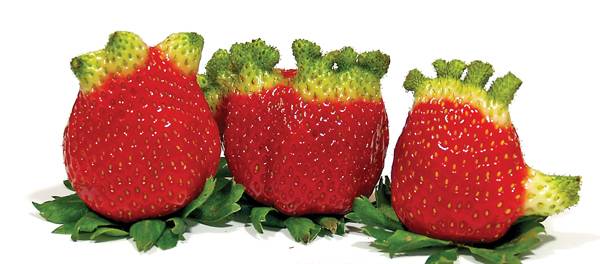MASTRE: What’s in your food?

Courtesy: sxc.hu
December 10, 2008
It’s about time, I say! After years of praise and acceptance, the way we look at genetically modified organisms — also known as transgenic crops or foods — is hopefully going to change and be better understood.
A national committee on genetically engineered crops and sustainability was established this past September. Its focus will be on the impacts of biotechnology at the farm level. This is fantastic. Nothing like this has been done before on our continent.
Although it is a small step in the right direction, there is still more to be done and many questions left to answer about the long-term effects of GMOs in our marketplace. For many years now, North Americans have nonchalantly invited genetically modified foods into our homes and onto our dinner plates.
Without questioning the possible implications for doing so, we have probably consumed more of them than we could care to realize. Our European counterparts, on the other hand, seem to think that it’s a big deal, and I definitely have to agree. I would like to know what I am eating when I am eating it.
Since 2001, debates over the benefits and drawbacks of transgenic foods have raged in Europe and they have literally changed the face of agricultural practice. Seven years later, North America is finally starting to evaluate the issue at the farm level — better late than never, I guess.
So, what does Europe have five years into it? For starters, more than 230 regions across the entire continent, including more than 4,200 municipalities and involving tens of thousands of farmers, are declared as “GMO-free.” This eliminates genetic modification from both agriculture and food produced in these areas.
That’s pretty impressive. According to the roster for the annual European Conference on GMO-free Regions, Biodiversity and Rural Development, participating nations include the United Kingdom, Ireland, Germany, France, Belgium, Sweden and Poland — the list goes on.
Traceability and accountability are part and parcel of the European Union’s mandatory labeling policy for foods and products containing GMOs. Under rules adopted in 2001 and 2002, all foods with altered DNA are to be labeled as such.
Throughout the production process, detailed records are kept so that even the food’s origin is traceable. Foreign imports — including those produced here in America — if being sold in Europe, must be labeled accordingly. Highly refined products such as corn oil, where the GMOs have been removed, are also labeled as having come from a GMO source.
A heated ethical argument involves the validity of biotechnology in mixing genes across species — even beyond the plant realm — such as the implications of consuming animal genes in plants or vice versa. We have the right to know what is what. Mixing GM crops with non-GM products could also render future labeling ineffective.
Environmentally, we don’t know the effects GMOs have on other organisms, soil microbes or on cross-pollination. Those are big questions. Potentially unintended gene transfers could occur between populations, thereby further changing their genetic make-up. Losses of flora and fauna may result.
Many of the genes selected for transgenic selection are those to increase yields and subsequent food production. Although it sounds like a favorable option, of the many chosen, genes are often altered to result in increased insect resistance or herbicide tolerant strains.
Improving herbicide effectiveness does little to decrease our dependence on them and so it seems the pesticide companies and the seed manufacturers have the most to gain. Pesticide use has already proven detrimental to our water bodies.
The U.S. Environmental Protection Agency states pesticides can infiltrate soil, thereby entering groundwater stores, adding that “the impact of agricultural chemicals on surface and groundwater quality has become an issue of national importance.”
While that’s not to say that GMO foods are terrorists waiting to attack us in our beds, there is something that can be said for accepting something at face value — which is what we’ve been doing since they hit the market.
The fact of the matter is that there is no long-term data on GMO ramifications and it’s time to start looking around to see if there are. We now have ten years of experience and data to draw on while evaluating their use in North America. That seems like a pretty good subset to start trials and research.
But, I can’t help but feeling like I’ve been a guinea pig of sorts in a scientific experiment of which I was never informed. At least in clinical drug trials the participant is told of possible side effects and what the desired effect shall be. Suddenly, organic is looking better and better.
— Erin Mastre is a graduate student in landscape architecture from Edmonton, Alberta, Canada
















